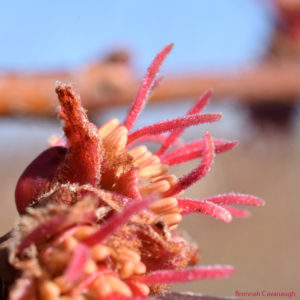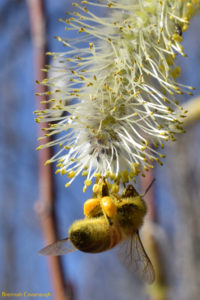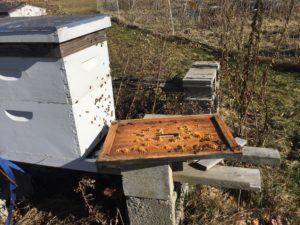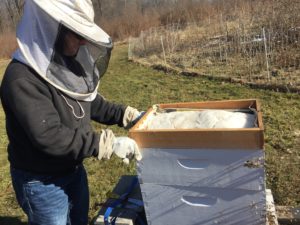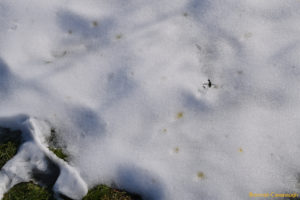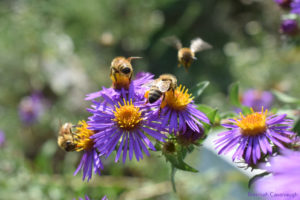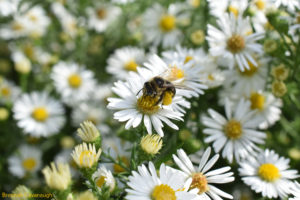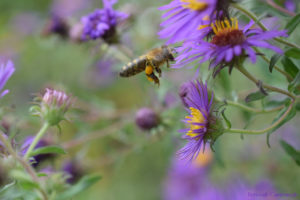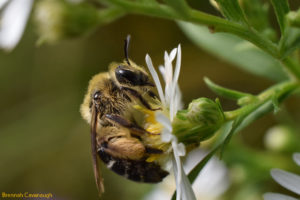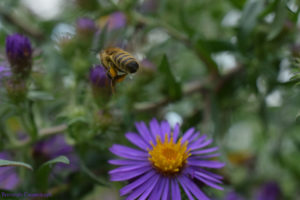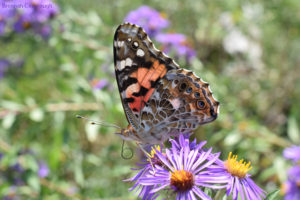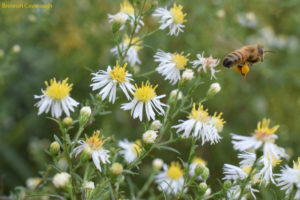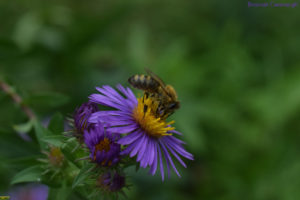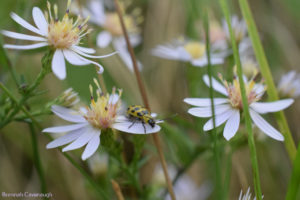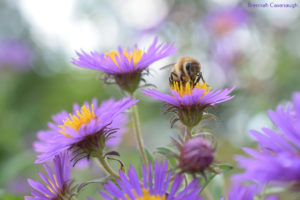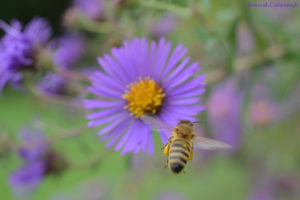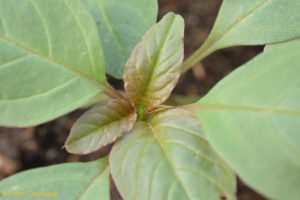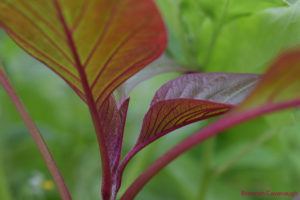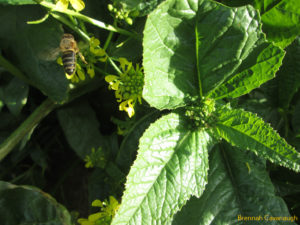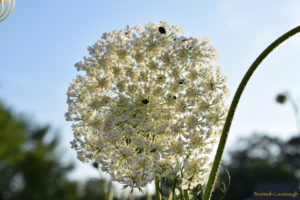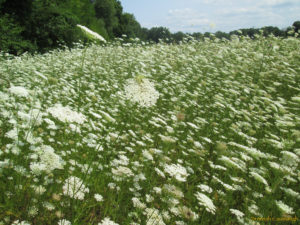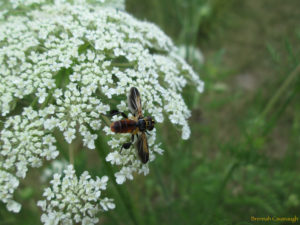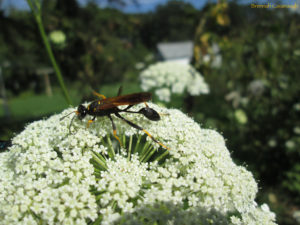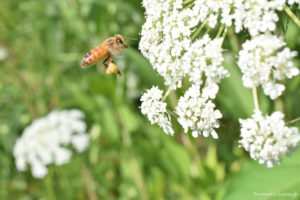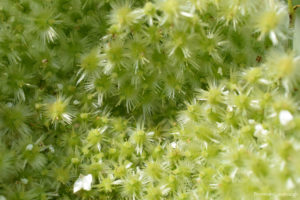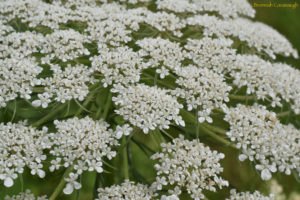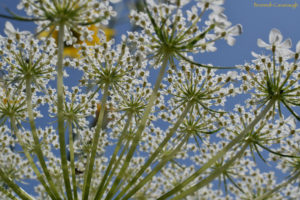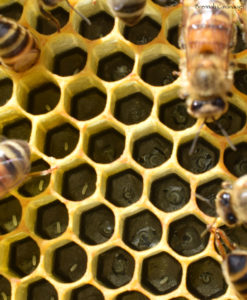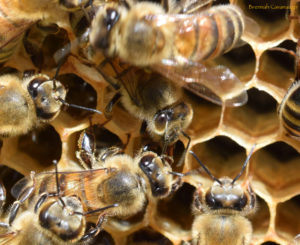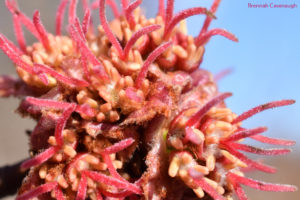
For honey bee colonies that have made it through the winter, the month of March can still be a difficult and risky time. Especially towards the beginning of the month, there isn’t much of anything for them to forage on. Despite that hinderance, the bees are busily expanding their brood rearing operation. The colony’s growing new generation requires more resources than what the relatively small (and all fully grown) winter generation needed. If the colony was successful the previous season, this should be no problem; their stores of honey and pollen would be adequate for the job.
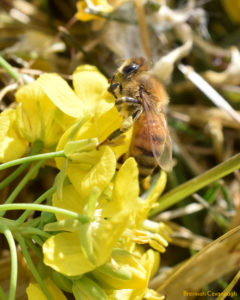
But in the case of my colonies, which were started late last year, and then faced a weirdly early start to winter, they were a bit short on pollen, which is especially important for their developing brood. The warmth of spring also came fairly early this year, and so there was plenty of time before anything was blooming outside for the bees to be out and about, looking for something to feed their brood.

Meanwhile in the hoophouse many of the winter crops were starting to bolt (produce their flowers), and the warmer temperatures meant that the louvres were open most of the time… So before long, the bees discovered it and were flying in through the louvres to gather pollen from the bolting winter crops. This would have been just fine, if they were able to find their way back out. Unfortunately, although they were very clever about navigating their way in, when they decide it is time to return to the hive, they tend to try to fly towards the sun, rather than retracing their path. I guess maybe they need to orient themselves for a while before they can pick out their route home? However it works, the result was that with just the louvres open, most of them couldn’t find their way out, and with the sides also opened up, some of them still found themselves stuck in the corners. (Bumble bees don’t have this problem… they seem to be extremely good navigators. They’ll fly into a corner occasionally, but usually after trying unsuccessfully to escape for a minute they just go off and try another way.)
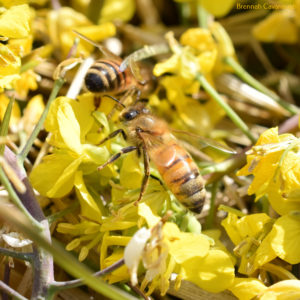
My response to this was to gather flowers from the bolting plants and arrange them in what I hoped would be a tempting display not too far from the hives (but also not too close, because that can lead to robbing, sometimes) and to catch bees that got in the hoophouse and brush them out of the corners.

The bees seemed to appreciate having a nearby patch of flowers to forage on, but some of them would still start flying into the hoophouse on the warmest days. One day toward the end of March, I noticed very few bees getting into the hoophouse despite it being a warm sunny day, and there were fewer on the patch by the hives. Finally, something else was flowering for them… but what was it? I didn’t see them on the hazelnut catkins that were just starting to open. Hazelnuts are wind pollinated and offer only pollen, which they would have gone for if something wasn’t offering them a better deal. It turned out to be the silver maples back in the woods.
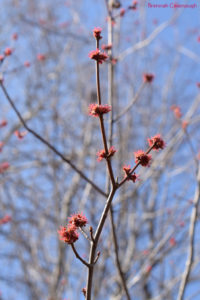
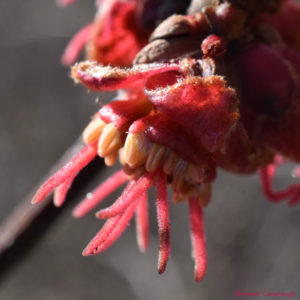
So now, as more things join the silver maples (willows are also starting to open their catkins now), the colonies will start to grow, and turn their attention toward their next season, which is the swarming season.
